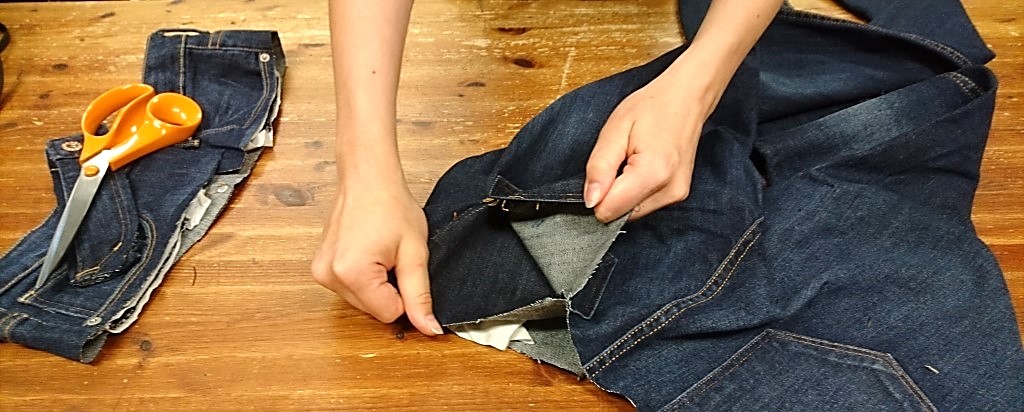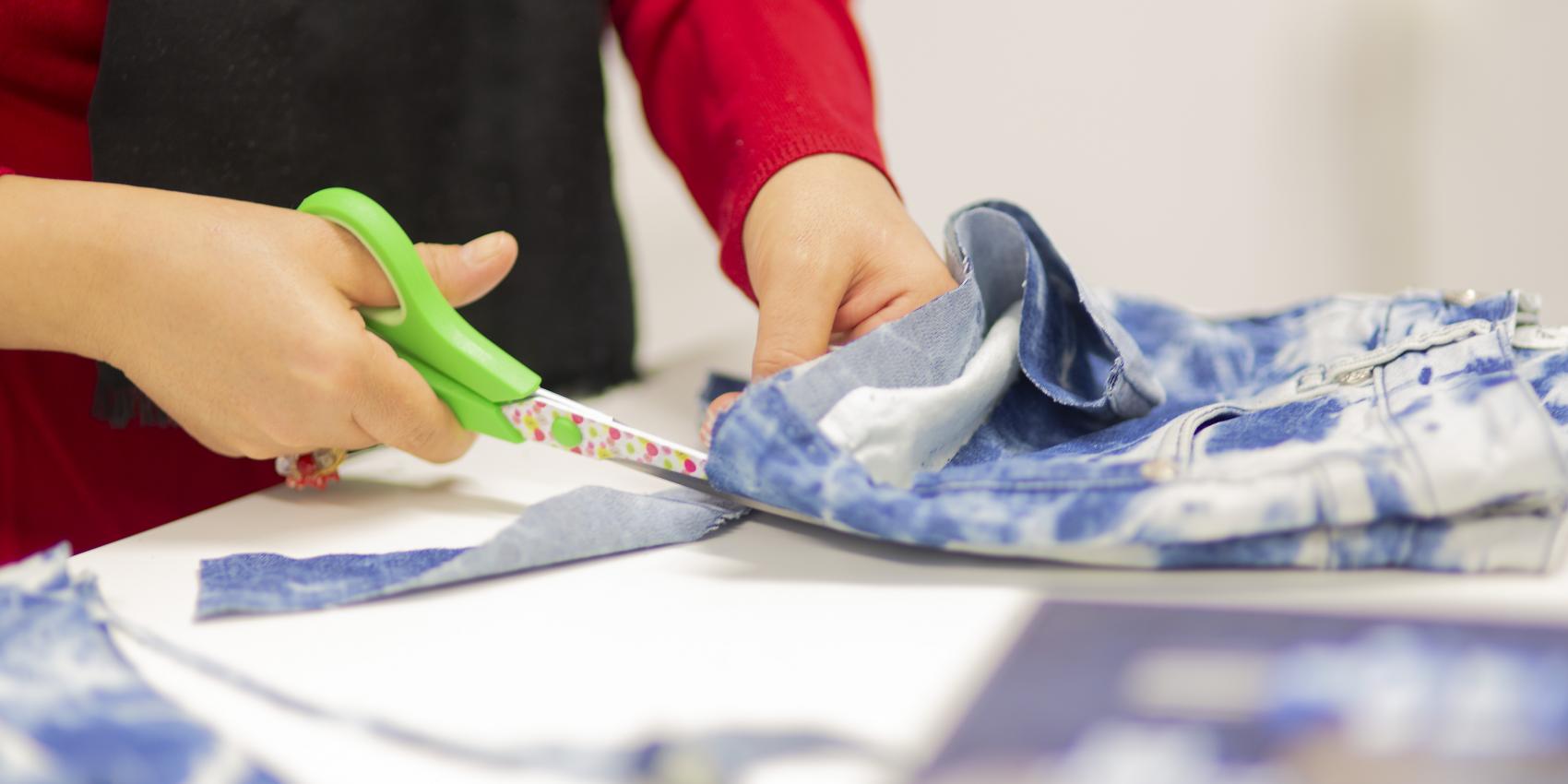Choosing and processing materials
When materials are chosen for circular economy products, the emphasis is on the availability, suitability, functionality and quality of the materials. Industrial leftover materials are clean and of uniform quality, and their composition is known. For the time being, their availability is challenging.
Pieces of recycled clothing obtained from sorting centres, second-hand shops and private consumers may differ to a great extent from each other. The thickness and flexibility of the material vary. The material composition of the clothing is varies greatly, and the information provided on product tags is not comparable.
Tip: When you look for materials for making circular economy products, turn the product inside out and see whether the product was manufactured and finished carefully and whether the seams are straight and the stitches short. If the manufacturing is high quality, it is likely that the fabric used is also high quality and can still withstand wear and use in the new product.
Preparing used clothing to become material for new clothing
Reused materials should be preconditioned with due care.

- Sort the clothes by material and/or colour.
- Check the clothes for wear, holes or runs.
- Examine the wear and stains on the fabric.
- Assess the fabric’s condition, durability, properties and suitability for making a high-quality circular economy product.
{"preview_thumbnail":"/sites/default/files/styles/video_embed_wysiwyg_preview/public/video_thumbnails/jmlmkuqjuI8.jpg?itok=0g8Z2ZeM","video_url":"https://www.youtube…","settings":{"responsive":1,"width":"854","height":"480","autoplay":0},"settings_summary":["Embedded Video (Responsiivinen)."]}
- Wash the clothes according to the wash instructions.
- Iron the clothes and check for changes caused by washing (shrinking, colour).
- Assess which seams and edges can be used as is in the new product.
- Remove any fasteners (buttons and zips).
- Cut out the structures that you do not need.
- Open the seams and iron them.
- Take note of the grain and any stretching.
- Consider the seam structures of the new product.
Identifying a material with burn tests and by examining it under a microscope
Burn tests allow materials to be sorted into cellulose, protein, semi-synthetic and synthetic fibres. For the test, you will need a tealight, matches, a lighter, scissors and tweezers. A burn test is conducted on top of a non-flammable base inside a fume hood.
Cellulose-based materials:
- Cotton, linen, hemp, jute, viscose and Modal. They are highly flammable and burn with a large flame, leaving behind light grey ash that crumbles easily. The smell of burnt paper is easy to detect in the remains.
Protein-based materials:
- Wool, silk and other animal hair. They burn slowly with a small, restless flame. You are left with a hard, black lump of coal that breaks apart when pressed. The smell of burnt hair is easy to detect in the remains.
Synthetic non-plastic-based materials:
- Polyamide, polyester and acrylic melt and release soot when burning. They form a hard, melted bead of plastic or leave a hard edge on the fabric. The smell of plastic is easy to detect in the remains.
A microscope is a good tool for identifying natural fibres. This method makes it easy to identify different fibre groups, but it may be difficult to identify fibres from each other within these groups. With regard to blended materials, it is easy to identify different types of fibres, such as cotton-polyester, when viewed under a microscope. The best way to learn to distinguish between materials is to compare the sample to a fibre that has already been identified accurately. The video shows wool fibre being studied with a burn test and under a microscope.
{"preview_thumbnail":"/sites/default/files/styles/video_embed_wysiwyg_preview/public/video_thumbnails/iRh31UP1f48.jpg?itok=Mamhq5Gf","video_url":"https://www.youtube…","settings":{"responsive":1,"width":"854","height":"480","autoplay":0},"settings_summary":["Embedded Video (Responsiivinen)."]}






